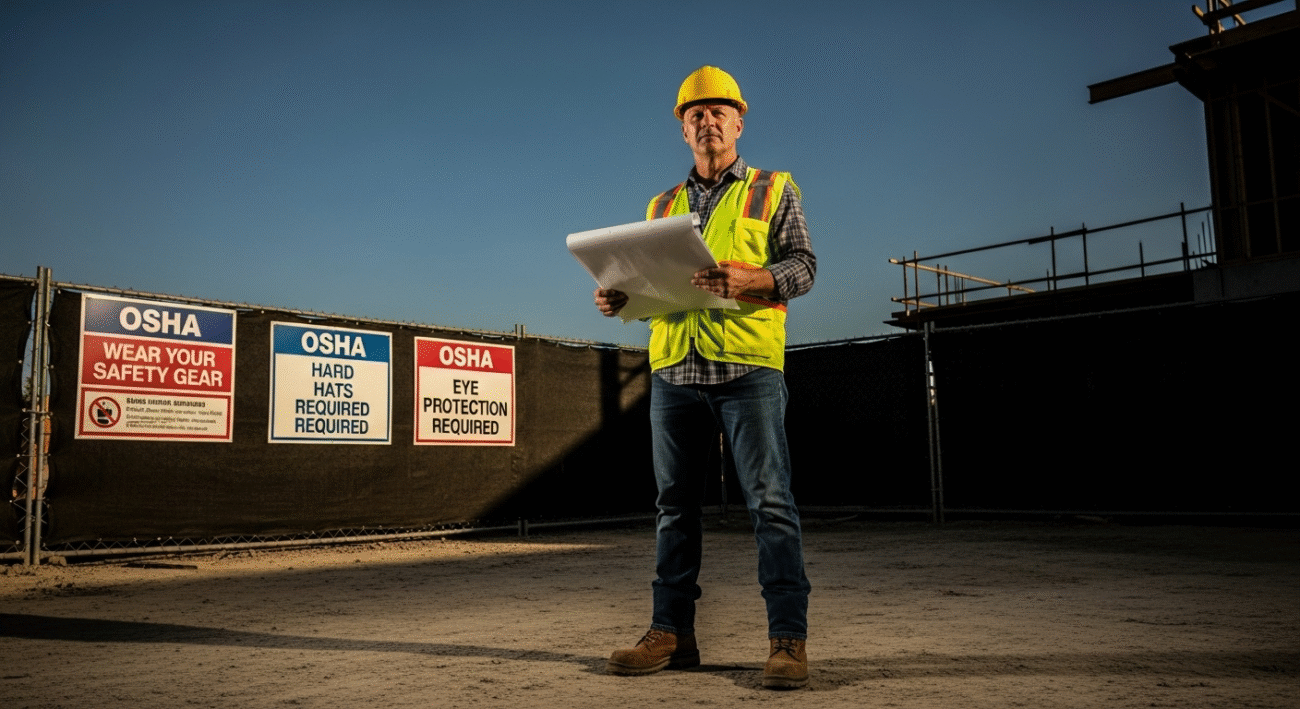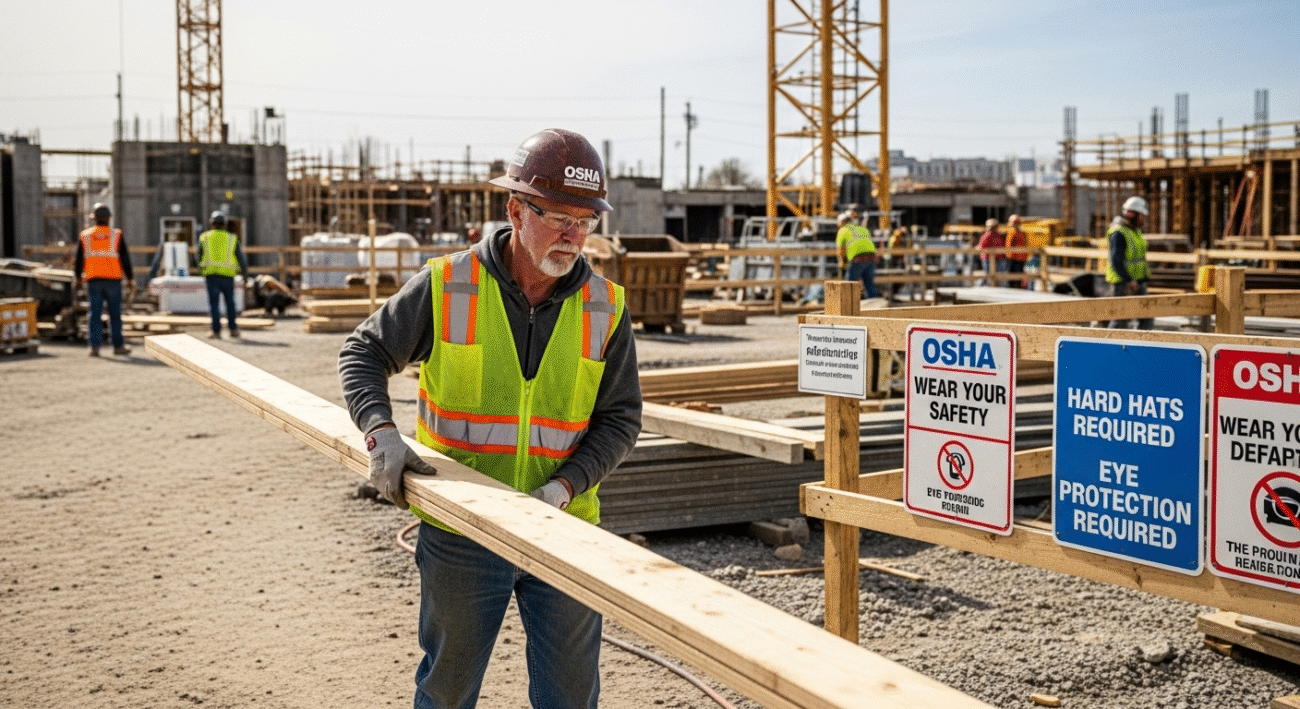Complete July 2025 Guide to Hi-Vis Clothing for Safety Compliance – How Workwear Clothing Standards Are Evolving to Meet New OSHA Requirements and Industry Best Practices
 Introduction
Introduction
High-visibility (hi-vis) clothing is essential for safeguarding workers in environments where visibility hazards exist, such as construction sites, roadway, utility, warehouse facilities, and more. As of July 2025, OSHA (Occupational Safety and Health Administration) and industry-specific safety standards have undergone significant updates to enhance worker safety and adapt to innovative materials and designs in the market.
Why Hi-Vis Clothing Matters for Safety Compliance
Hi-vis clothing is designed to make workers easier to detect by the human eye, especially in high-risk, low-light, or complex environments. These garments use fluorescent colors, reflective materials, and strategic design to drastically improve the visibility of employees.
In 2025, compliance with hi-vis clothing requirements is not just a best practice—it’s a regulatory necessity. OSHA and ANSI standards demand that employers provide, maintain, and enforce the correct use of hi-vis garments in many industries, including:
- Construction & Road Crew: Workers are exposed to vehicle and heavy machinery traffic.
- Oil & Gas, Utilities & Infrastructure: Crews often operate in dark or hazardous locations.
- Warehousing & Distribution: Forklift and vehicle operations increase risk.
- Rail, Airport & Maritime Operations: High-traffic, high-noise settings heighten danger.
OSHA’s July 2025 Changes — What’s New in Workwear Safety Standards
Key OSHA Updates for July 2025
1. Broader Coverage
OSHA has broadened the definition of “at-risk workers” who must be provided hi-vis apparel. This now includes not just construction but also warehouse, manufacturing, and event staff where vehicle movement is present.
2. Performance Classes and Minimum Requirements
The newest OSHA updates closely align with the ANSI/ISEA 107-2025 standard but add mandates for:
- Durability: All hi-vis clothing must now withstand at least 50 wash cycles without significant loss of reflectivity or colorfastness.
- Class 3 Garment Expansion: More roles now require Class 3 (the highest visibility) attire, especially in multi-lane roadside and high-speed environments.
3. Labeling and Documentation
Employers are now required to retain documentation regarding hi-vis clothing distribution, training, and compliance audits.
4. Training Requirements
Enhanced emphasis on employee training: Workers must be educated not just about wearing hi-vis gear but also about inspecting, maintaining, and replacing it.
Penalties for Non-Compliance
Failure to adhere to July 2025 OSHA hi-vis clothing standards can result in substantial fines, work stoppages, and increased liability risks.
ANSI/ISEA 107-2025 — Key Updates and What They Mean
The ANSI/ISEA 107-2025 standard is the backbone of hi-vis clothing requirements in the U.S. The 2025 revision introduces several pivotal changes:
- Expanded Color Range: While fluorescent yellow-green and orange-red remain standard, additional highly visible colors—such as fluorescent red and lime—are now recognized.
- Improved Reflectivity Specifications: Updated requirements for retro-reflective tape to enhance performance in inclement weather and damp conditions.
- Modular Garments: Greater emphasis on “modular” combinations, such as vests and detachable sleeves, ensuring maximum adaptability and comfort without sacrificing compliance.
- Uniform Durability Testing: All hi-vis clothing must pass standardized durability and reflectivity retention tests post-laundering.
ANSI Performance Classes
- Class 1: Minimal risk, off-road, low-speed environments.
- Class 2: Greater visibility for higher risk or moderate traffic (e.g., delivery drivers, warehouse staff).
- Class 3: Maximum visibility for the highest-risk roles (e.g., highway workers, emergency responders).
Note: Many roles that previously needed Class 2 are now required to wear Class 3 garments per new risk assessments.
Industry Best Practices for Workplace Hi-Vis Apparel
To maximize safety and minimize legal liability, industry leaders are going beyond minimum requirements. Here’s how top organizations are staying ahead:
1. Job-Specific Risk Assessments
Regular hazard assessments ensure the use of the correct hi-vis class and design for each role and environment.
2. Employee Comfort and Engagement
Selection of breathable, lightweight, and ergonomic designs increases the likelihood workers will consistently wear hi-vis gear.
3. Regular Compliance Audits
Frequent inspections and records management make it easier to prove compliance during OSHA inspections.
4. Integrated PPE
Hi-vis clothing is now often combined with other forms of personal protective equipment (PPE), such as flame-resistant (FR) features, arc protection, or weather-resistant treatments.
Advancements in Hi-Vis Clothing Technology and Materials
1. Smart Fabrics & Wearables
Some 2025 hi-vis garments are equipped with passive (reflective) and active (LED) illumination, plus RFID and GPS trackers for lone worker safety and asset visibility.
2. Enhanced Comfort and Durability
- Moisture-Wicking Materials for summer heat
- Thermal Insulation for cold conditions
- Reinforced seams and advanced fiber blends for longer life
3. Eco-Friendly Options
Hi-vis clothing manufacturers are increasingly offering recycled fabrics, water-based dyes, and responsibly sourced raw materials in response to sustainability demands.
Choosing the Right Hi-Vis Clothing for Your Workforce
A comprehensive hi-vis clothing program considers more than just color and tape placement. Use this checklist:
Visibility Level
- Match ANSI class rating to job hazard and traffic exposure.
Durability & Comfort
- Choose garments certified to retain reflective properties for at least 50 washes.
- Opt for ergonomic, weather-appropriate cuts.
Customization
- Branded or logoed hi-vis clothing is permitted, provided it does not obstruct reflective areas.
Integrated Protection
- For specific hazard environments (e.g., electrical, chemical), select multi-functional PPE-compliant hi-vis gear.
Supplier Certifications
- Source from reputable suppliers who provide ANSI/ISEA 107-2025 certified products and full compliance documentation.
How to Maintain and Replace Hi-Vis Gear for Maximum Safety
- Inspection: Employees should inspect garments before every use for fading, rips, or loss of reflectivity.
- Washing: Always follow manufacturer instructions; avoid harsh detergents, bleach, or heat.
- Replacement Schedule: Most hi-vis gear should be replaced after 6-12 months of regular use, or when reflective material visibly degrades.
Conclusion: Staying Ahead with Safe, Compliant Workwear in 2025
Hi-vis workwear isn’t just about meeting the minimum regulatory requirements—it’s about protecting your greatest asset: your workforce. The July 2025 OSHA and ANSI/ISEA 107-2025 updates place a renewed focus on durability, coverage, employee training, and documentation. By embracing modern materials, integrated PPE, and best practices, your organization can lead the way in workplace safety and regulatory compliance.
Stay informed, stay visible, and stay compliant in 2025 and beyond.
Top 5 Frequently Asked Questions (FAQs)
1. What are the new hi-vis clothing requirements under OSHA in July 2025?
The 2025 OSHA guidelines require broader use of hi-vis workwear, especially in warehousing, manufacturing, and high-speed traffic settings. All hi-vis gear must meet updated durability and performance specifications, and employers must now provide documented compliance and employee training.
2. What’s the difference between ANSI Class 2 and Class 3 hi-vis clothing in 2025?
Class 2 hi-vis clothing covers the torso and is suitable for moderate-risk environments. Class 3 provides additional coverage (including sleeves and legs, where possible) and is mandatory for workers in high-risk zones such as highways, busy construction sites, or during low-visibility conditions.
3. How do I know when hi-vis clothing needs to be replaced?
Hi-vis clothing should be replaced when it becomes faded, torn, or when the reflective taping loses its brightness. The new OSHA and ANSI standards recommend replacement after 50 washes or 6–12 months of continual use, whichever comes first.
4. Are branded or customized hi-vis garments compliant with the 2025 standards?
Yes, as long as logos or branding do not obscure the required reflective materials or approved color areas, and the garments meet all ANSI/OSHA performance standard requirements.
5. How can I ensure my workplace is compliant with new 2025 hi-vis clothing standards?
Partner with ANSI-certified suppliers, conduct regular hazard assessments, audit PPE usage, and provide ongoing employee training on care and replacement protocols.



